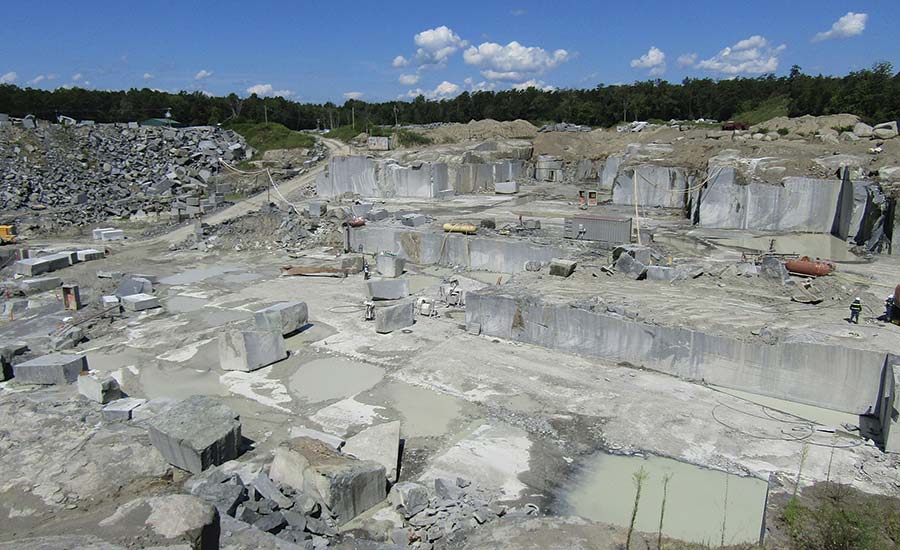Discovering the Rich History and Sustainable Practices of Granite Quarrying
As we base on the precipice of discovering the elaborate tapestry of granite quarrying, a journey with time reveals not just the physical act of removing stone yet likewise the social and historic relevance woven into the really fabric of this practice. From the old origins that laid the foundation for contemporary quarrying methods to the sustainable methods that are shaping the future of this sector, each carve mark on granite surfaces informs a tale waiting to be discovered (granite quarries in south africa). The tradition of granite quarrying stretches much beyond mere extraction; it is a testament to human resourcefulness, resilience, and the long-lasting attraction of this stunning stone
Old Beginnings of Granite Quarrying
Dating back to old human beings, the method of quarrying granite has been an essential part of human background and architectural innovation. The earliest evidence of granite quarrying go back to ancient Egypt, where huge pyramids and elaborate sculptures were crafted from this resilient stone. The Egyptians utilized primitive devices to draw out granite blocks from quarries, showcasing the significance of this product in their huge constructions.
Moving on in background, the Greeks also made significant contributions to the quarrying of granite. The Greeks made use of granite in different building marvels, such as temples and statuaries, showing their ability in shaping and carving this hardy stone. The Romans better fine-tuned the techniques of quarrying granite, utilizing innovative tools like chisels and hammers to extract and shape granite for their legendary structures.
Via the centuries, the practice of quarrying granite has progressed, with modern technologies enhancing efficiency while maintaining the classic appeal of this natural rock - granite quarries in south africa. From ancient human beings to contemporary contractors, the legacy of granite quarrying proceeds to form our globe
Evolution of Quarrying Techniques
The advancement of quarrying techniques has been noted by a continual development in the direction of better effectiveness and accuracy in drawing out granite. From the fundamental approaches used by our forefathers to the advanced technologies made use of in contemporary quarrying operations, the sector has undertaken considerable advancements. Early quarrying techniques included manual work with basic tools such as chisels, hammers, and wedges to extract granite blocks from the planet. As human beings proceeded, methods like fire-setting and primitive nitroglycerins were introduced to help with the removal process.
Developments in computer-controlled equipment and 3D modeling have optimized quarrying procedures, leading to minimal ecological effect and boosted sustainability methods. As the need for granite continues to climb, the development of quarrying methods remains essential to meeting market requires efficiently and sustainably.
Cultural Importance of Granite
Granite holds an extensive social importance across different people due to its enduring presence in architectural work of arts and admired monoliths. The cultural value of granite expands past its physical features; it symbolizes strength, stability, and eternity, making it an icon of enduring heritages and traditions.

Sustainable Practices in Quarrying
Amidst the rich background of granite quarrying and its social relevance exists an expanding focus on sustainable methods within the sector. As environmental understanding and concerns regarding source exhaustion have actually enhanced worldwide, the quarrying sector has progressively embraced lasting techniques to reduce its impact on the setting and bordering areas.

Furthermore, recovery and rehabilitation of quarry sites post-extraction are important to sustainable techniques. By bring back quarried locations to an all-natural or valuable state, such as creating wildlife habitats or entertainment rooms, quarriers can balance out the ecological impact of their procedures and contribute positively to the neighborhood community.
Tradition of Granite Quarrying
With a historic backdrop steeped in workmanship and commercial progression, what enduring impact has granite quarrying left on the landscape of modern-day culture? The heritage of granite quarrying transcends simple removal techniques; it has actually formed architectural wonders, city landscapes, and cultural heritage worldwide. The durable nature of granite has made it a recommended option for monoliths, structures, and facilities, standing as a testimony to the skill and creativity of quarry workers throughout generations.
In addition, the financial impact of granite quarrying can not be neglected. The market continues to give job opportunity and drive neighborhood Get More Info economies in regions where granite extraction is widespread. It has also spurred technological innovations in quarrying strategies and tools, resulting in a lot more reliable and lasting methods.
In terms of sustainability, the legacy of granite quarrying consists of initiatives to minimize environmental effects through improvement projects and responsible source administration. By stabilizing financial rate of interests with ecological stewardship, the market aims to ensure that future generations can proceed to benefit from this long-lasting natural deposit.
Conclusion
